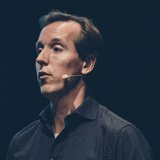Summary
The mere idea of interacting with the DMV or the IRS makes any of us groan. But what if a dysfunctional government service is what’s standing between you and the ability to keep your house, feed your family, or get a kidney? Hear from Marina Martin, the most recent Chief Technology Officer of the U.S. Department of Veterans Affairs, about the trials, tribulations, and ultimate successes of her team’s fight to get usable healthcare application into the hands of our nation’s Veterans. She’ll cover key tactics for leaders in bureaucracies of all sizes to prioritize and drive the end user amid regulations, red tape, and committee meetings through stories from her five years in the federal government.
Key Insights
-
•
Despite 20 million veterans, only 8 submitted health care applications online due to convoluted forms and inconsistent hospital systems.
-
•
Veterans often face steep barriers from multiple disconnected VA websites and numerous logins, totaling over a thousand sites and dozens of credentials.
-
•
Direct conversations with veterans, like Dominic, revealed critical UX pain points invisible to VA staff focused on brute forcing paperwork.
-
•
Veterans want straightforward, easily understandable digital experiences over complicated government websites.
-
•
The vets.gov platform instantly enrolled 369,000 veterans, demonstrating the power of user-centered design in government.
-
•
Cross-silo collaboration between doctors and claims processors enabled a system that translated complex medical exams into legal disability decisions quickly.
-
•
Bureaucratic resistance to cloud computing was overcome by rigorously fulfilling all security paperwork and demonstrating improved investigative access.
-
•
Engaging with bureaucracy’s existing processes instead of circumventing them ensures sustainable transformational change.
-
•
Veterans prefer the option to personally tell their story during appeals, but need clear, honest information to make informed choices.
-
•
Lessons learned at the VA regarding user experience and organizational silos are now being applied to improve foster care systems for 400,000 kids.
Notable Quotes
"Most people think that veterans in America automatically get health care. That is not the case."
"Only eight people filled out the online application out of over 847,000 pending."
"Veterans don’t use the internet was the common excuse we heard, but that was simply not true."
"Dominic had tried to apply 12 times and kept running into PDF and terminology problems."
"This new vets.gov site is extremely easy. I have not had this level of ease with a government website at all."
"Every experience at the VA is broken in its own way."
"By getting all the people in one room — doctors and claims processors — we had them demonstrate their processes to each other. Minds blown."
"You cannot just say, ‘Go learn the cloud tech in a weekend’ to someone who’s been an expert for 20 years."
"We wrote one great security narrative and then just copied and pasted it into every other piece of paperwork."
"We got an official memo from the inspector general saying they preferred logical cloud access over physical access."
Or choose a question:
















More Videos

"Conscious uncoupling is about identity — how one thinks of oneself defines oneself and how others define you."
Nalini KotamrajuResearch After UX
March 25, 2024

"Not belonging anywhere meant that I had access everywhere."
Dean BroadleyNot Black Enough to be White
January 8, 2024

"I appreciate your allyship when I'm in the room, but I appreciate it more when I'm not in the room."
Denise Jacobs Nancy Douyon Renee Reid Lisa WelchmanInteractive Keynote: Social Change by Design
January 8, 2024

"Focus groups build empathy by letting team members share their experiences in real time."
Kim Fellman CohenMeasuring the Designer Experience
October 23, 2019

"Design helps build capital and seek comfort, which draws in the most powerful."
George AyeThat Quiet Little Voice: When Design and Ethics Collide
November 16, 2022

"Sometimes alignment work isn’t enjoyable, but it’s part of the job for design system success."
Nathan CurtisBeyond the Toolkit: Spreading a System Across People & Products
June 9, 2016

"Our researchers talk regularly to the CEO and are closely involved in product decisions, making research highly impactful here."
Greg PetroffThe Compass Mission
March 10, 2021

"Budget and time are the enemies of inclusivity in research."
Chloe Amos-EdkinsA Cultural Approach: Research in the Context of Glocalisation
March 27, 2023

"Agile can feel like a cult, but the data helps show it’s working and not just a belief system."
Mackenzie Cockram Sara Branco Cunha Ian FranklinIntegrating Qualitative and Quantitative Research from Discovery to Live
December 16, 2022
















